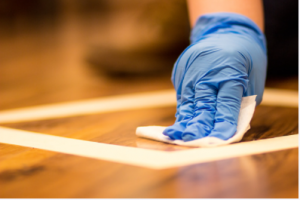When a substance is suspected of containing asbestos, whether it’s building material, shingles, caulking, paint, or pipe, the homeowner often calls asbestos testing professional to come out and check the material first. It can be beneficial to get some tips for handling the material when gathering a sample. Here are some suggestions from the professionals about how to collect samples and where to send them to.
How should you gather a material sample for asbestos testing? Where should you send it? This article contains several ideas for sample gathering and transportation, including preparation and inspection, asbestos testing and post-incident analysis, removal, and storage. Here’s a quick list of sample gathering ideas: Look around your home for any asbestos debris if you see asbestos fibres on insulation, carpeting, roofing, or vinyl floor tiles.
You’ll want to know the specific type of asbestos (either chrysotile or anthophyllite) that is located in your home so that you can request an asbestos testing inspection to find the specific type. You should also know the quantity of each type found. The good idea is to collect a sample and bring it to a certified inspector to determine if the level of asbestosis is enough to present health risks.
 Once the inspector has gathered a sample, you need to determine where to send it for asbestos testing Adelaide. Since the mineral comes in many different forms, some of the most commonly-collected samples include asbestos dust, mineral fibre, cracker chippings, clothing fibres, insulation and fireclay. If you’ve been exposed to high levels of asbestos, you may be wondering if there’s a way to “safely” dispose of the materials.
Once the inspector has gathered a sample, you need to determine where to send it for asbestos testing Adelaide. Since the mineral comes in many different forms, some of the most commonly-collected samples include asbestos dust, mineral fibre, cracker chippings, clothing fibres, insulation and fireclay. If you’ve been exposed to high levels of asbestos, you may be wondering if there’s a way to “safely” dispose of the materials.
The best way to do this is to work with an accredited laboratory that accepts samples that have been submitted by individuals such as yourself. For example, when you receive an asbestos-related sample from a qualified sampling site, an accredited laboratory will:
The inspectors will perform a wide range of tasks when determining the level of asbestos exposure in your home. For example, the inspectors will: collect a sample in a pre-determined quantity, seal the sample and send it to a lab; have the sample tested to identify the specific mineral composition; test for colour and fibre texture; evaluate the thickness of the material and the structure. In meeting the requirements of EPA, all asbestos testing must be performed by a certified gemological laboratory.
To be considered for asbestos testing Adelaide, you’ll need to provide the laboratory with one or more samples. You or one of your family members should gather the samples and then send them to the lab for testing. The collection and testing kits must be kept safely until the laboratory receives them. In addition, it will help ensure that the appropriate asbestos testing kits are on hand when the laboratory receives your sample.
There are many ways asbestos testing labs can collect samples. You can: Collecting the sample directly from the suspected asbestos fibres using a sensitive instrument known as a radiation spectrometer. Another option is to use a device known as a sampler that allows lab technicians to collect samples directly from the suspected asbestos fibres. Finally, a sample can often be collected from the bottom of asbestos fibres while still in the matrix. Regardless of which method is used, the asbestos sampling kit will include a radiation detection detector, protective clothing, and gloves.
